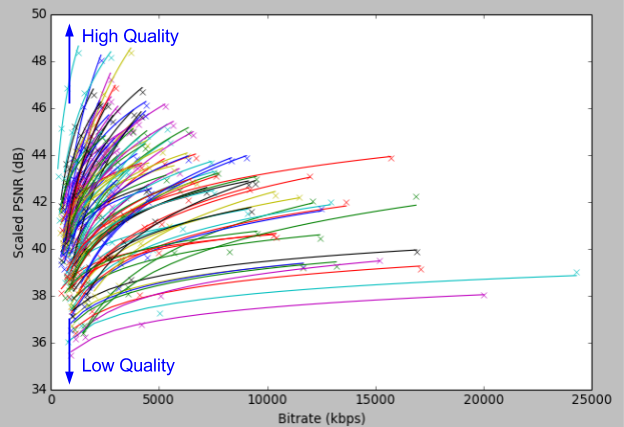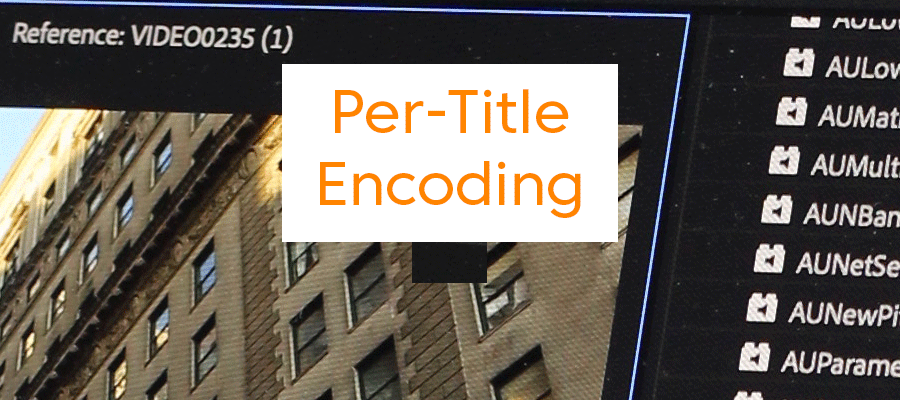The initial concepts for Per-Title Encoding were developed previously around 2012, and the technology was then used productively from 2015, driven forward significantly by Netflix. At that time, developers there succeeded in massively reducing the computing power required for the content analysis of video content. Since then, Per-Title has been considered a proven means of realising significant bandwidth savings and minimising the necessary bit rate, all while maintaining optimal quality.
How does Per-Title Encoding work?
As the name suggests, the process involves adapting the encoding setup to the specific content of the film material. Before the actual encoding process is started, a complex analysis of the video to be processed is conducted. A readily cited example of different coding requirements: cartoons with monochrome and large-scale areas allow significantly greater compression than complex scenes in action films or sports broadcasts.

Complex scenes with motion and textures require higher bit rates than scenes with less motion. Source: Bitmovin
After determining the level of complexity required for encoding, the specific level for bit rate scaling is sent to the encoder as an encoding profile. As a result, this procedure enables a significant minimisation of the bit rate and thus a reduction in bandwidth consumption. This “optimal” bit rate varies for each type of content, and even from title to title. Action scenes or sports scenes usually require a higher bit rate to store the information because they contain plenty of motion and less redundancy, which renders each scene more complex. Therefore, they also contain fewer options for data compression without compromising the perceived quality of the content.
Per-Title in practice
A prerequisite for a commercially (and technologically) viable use of the technique is the development of a high-quality metric to match your requirements and content. As a rule, the necessary information is collected from different encodings in combination with a variety of different bit rate settings.
To gain an impression of the determined parameters’ efficiency for practical use, it is recommended to perform a PSNR analysis. The Peak to Signal Noise Ratio is the measure of the technical quality of a video signal.

Signal to noise ratio / PSNR. Source: Netflix Techblog
Based on the results of such an analysis, you can derive a specific bit rate matrix to optimally encode each content file.
In most cases, this solution means an improvement in the quality of the experience, accompanied by a reduction in bandwidth utilisation. Particularly important for VoD and OTT platforms.
We are successfully utilising Per-Title Encoding in relevant projects and can support all the necessary steps in both development and implementation, with our technology partners furnishing us with the relevant expertise and know-how.
